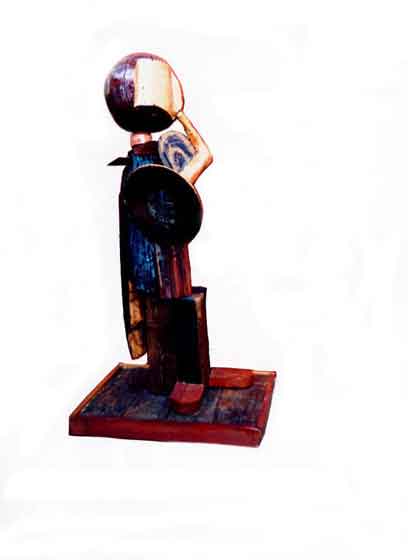
|
A. Ursyn
Orchestra / French Horn Charles
|

Charles, the French horn player, won first place in an international competition and all the orchestra members gathered in Lorenzo’s (the famous tenor) garden to celebrate the victory. But this event made , Arthur, another French horn player sad and frustrated, as he felt himself ready for this award. However, after a while he could be seen heartily congratulating his colleague and rejoicing at the big party. A few days later, Arthur learned that he had won a big lottery prize and became rich. This was a big consolation in his dissapointment, so many predicted Arthur would retire from the symphony orchestra and begin traveling. Not Arthur! "Would you?" he keeps saying. He continues practicing to prepare for next year’s competition. Moreover, he supports the orchestra financially by ordering posters and advertisements, and he also publicizes coming events in newspapers, on the radio, television, and online. He did not even replace his old instrument! |

The French Horn, not to be confused with the English Horn,
is a transposing instrument utilized by players who usually know how to
read more than one clef or transpose. Transposing simply implies that the
player has to play something different than is written on the piece of paper.
Since there are only three or four keys on the horn, a player uses high
tension on the lips plus lots of air to hit high notes. A player uses low
tension when hitting low notes. While playing, French Horn players need
to dump the condensation that has accumulated in the horn.
Horns have been present since the beginning of time. At first, they were
used for signaling, mostly for hunters. French Horns are called French Horns
because they originated in France.
Since French Horns didn't have any keys on them, crooks were used when there
was an accidental or change of key. Crooks were extra tubing that were added
when there was an accidental or change of key in the piece. Sometimes, that
was in the middle of the piece, so using crooks was very impractical.
Then came the hand horn which used different positions
of the hand to come up with different notes. This helped resolve the problems
of crooks.
Later came the F horn which had three keys, and the B flat horn with an
extra key and tubing that made it easier to hit high notes.
Since there are many notes that could pop out on one fingering, players
have to hear the note before they play it.
Some famous horn pieces are:
Mozart: Horn Concerti
Haendel: Water Music